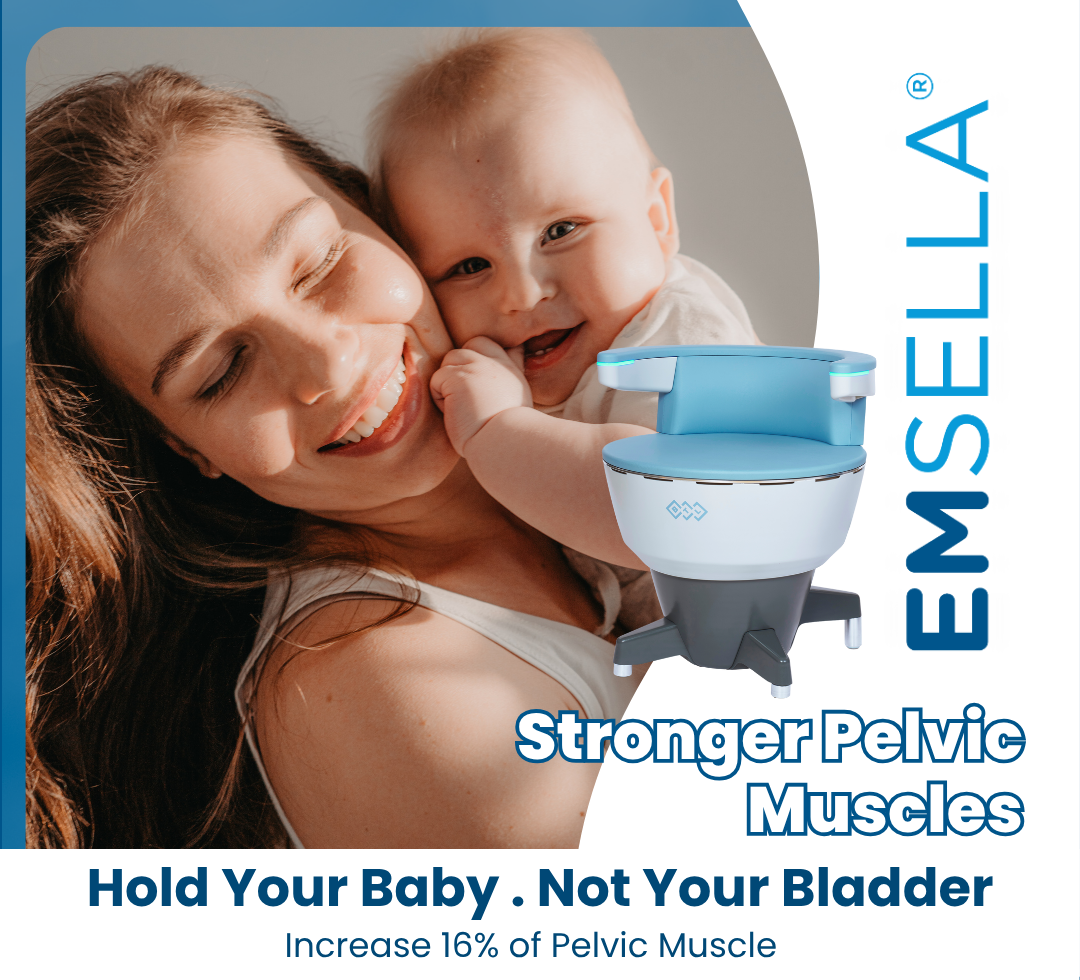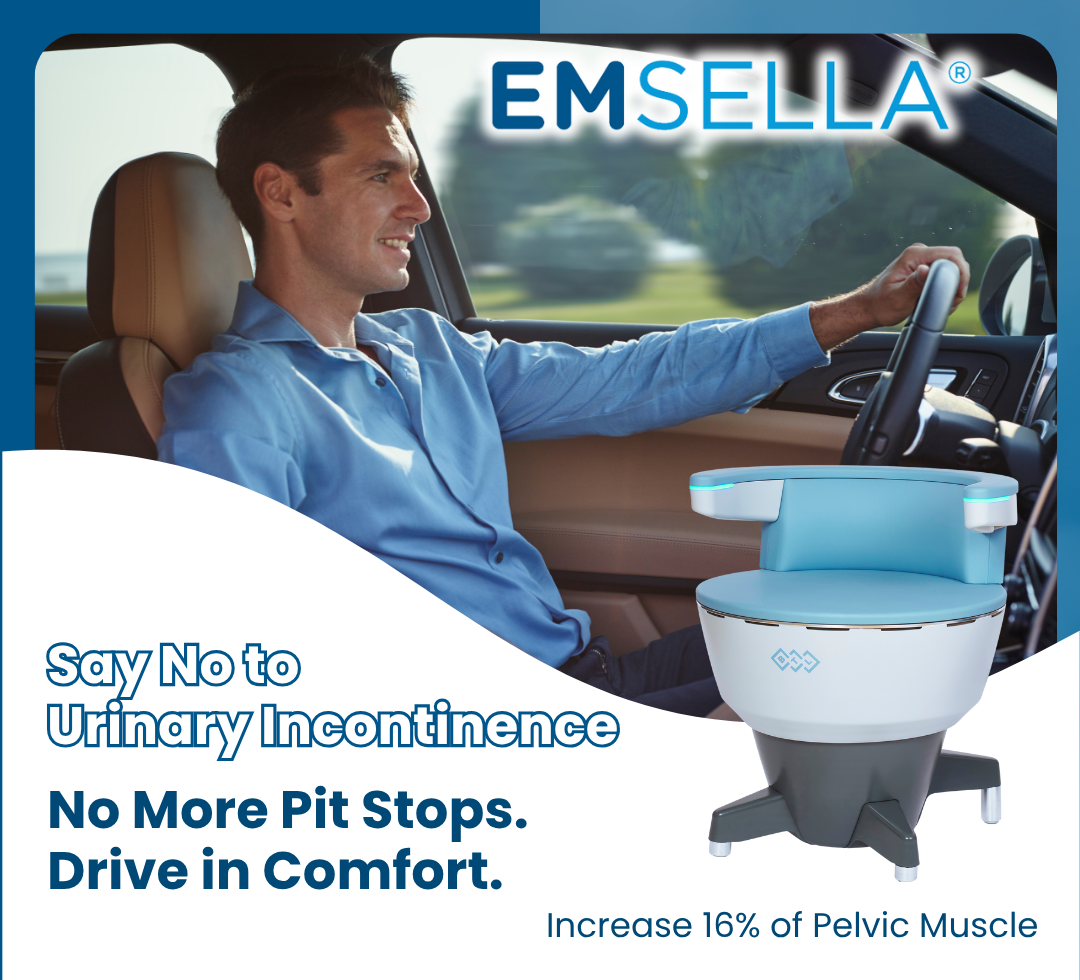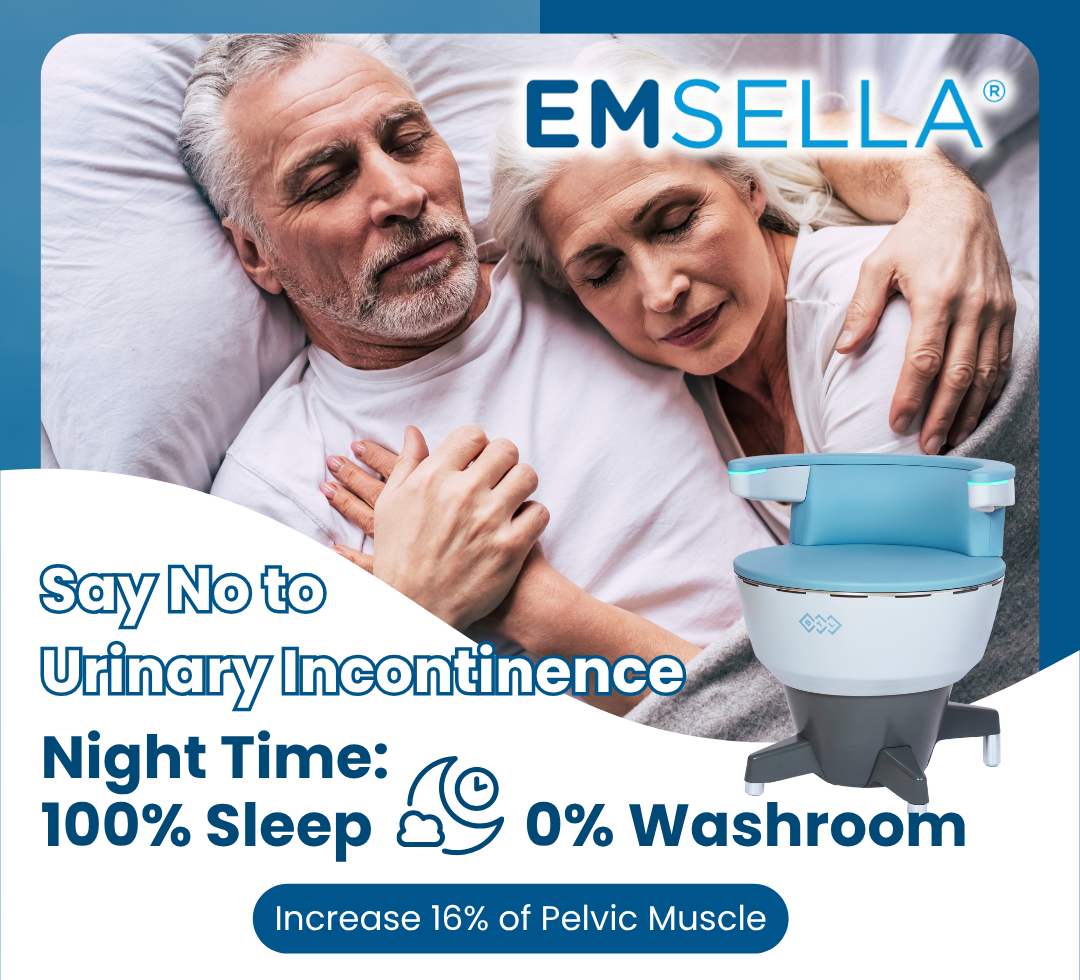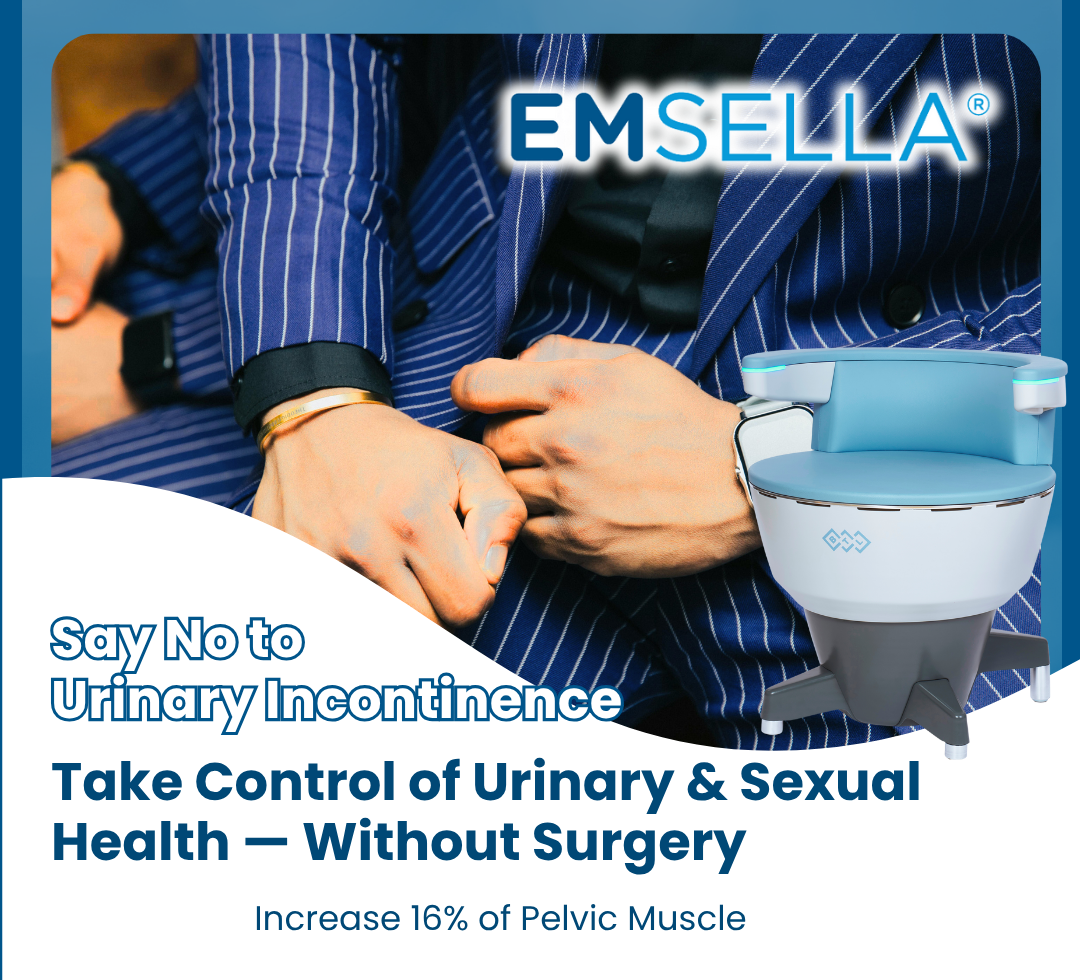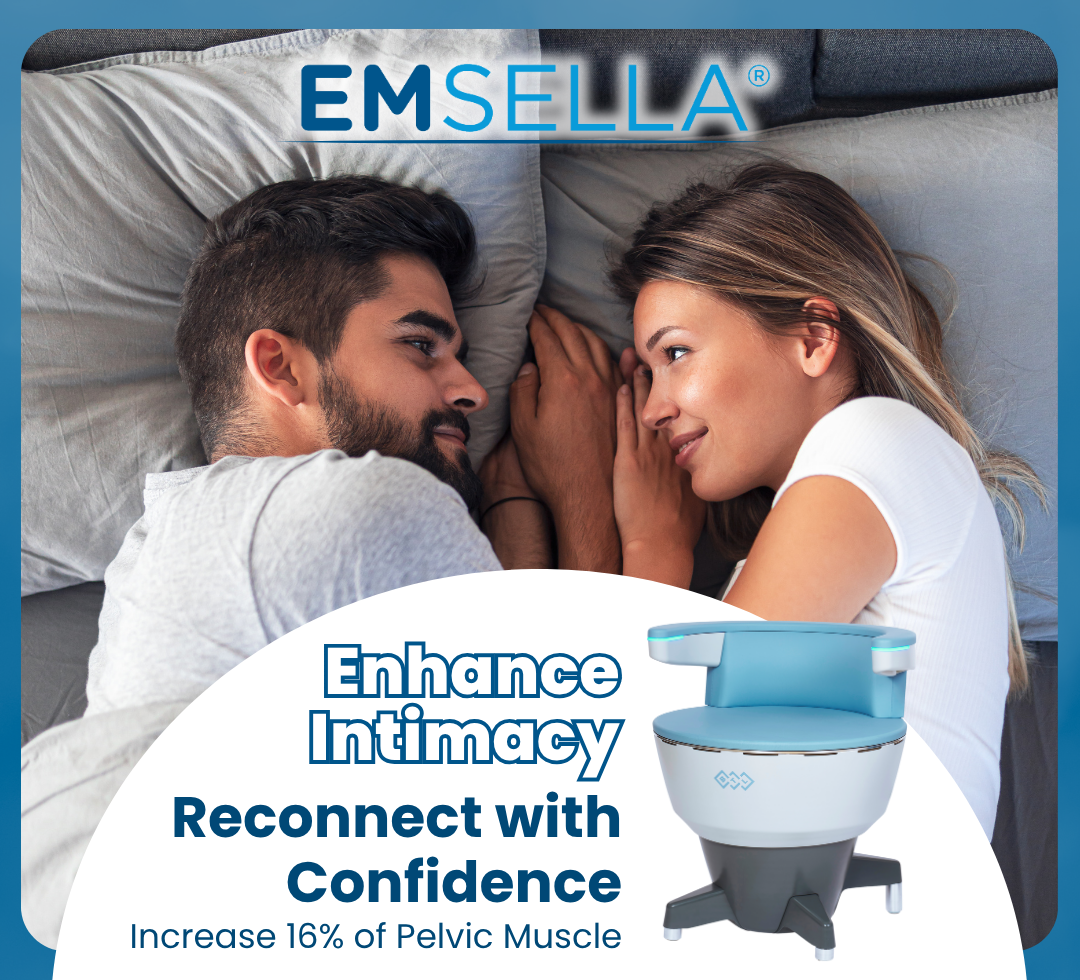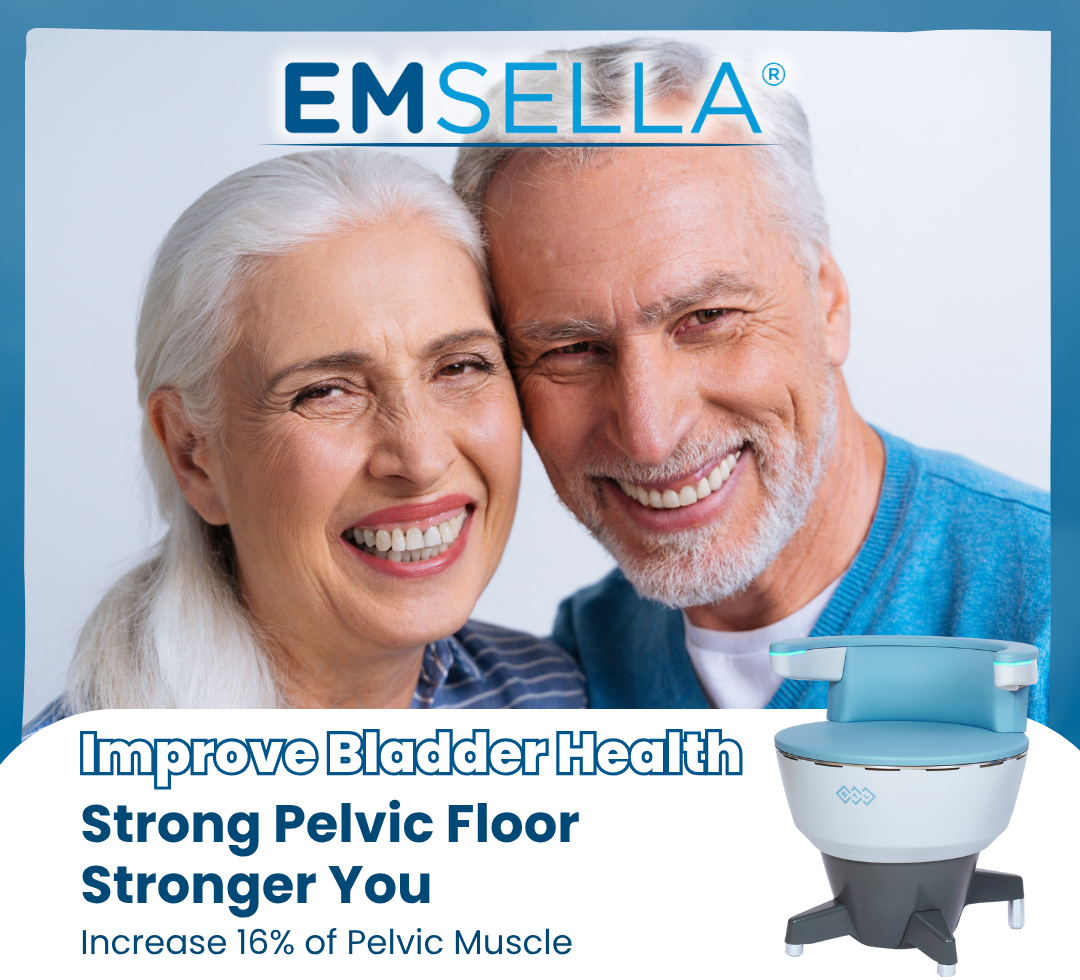Pelvic Floor Health
What Every Woman Should Know
Have you ever noticed occasional urine leakage when you laugh, cough, or sneeze? Or maybe you find yourself waking up several times at night to use the washroom, or avoiding long car rides because you’re worried about bladder control?
The pelvic floor is a group of muscles that support the bladder, uterus, and bowel. When these muscles weaken, it can lead to problems such as urinary leakage, frequent urination, and even a loss of confidence in daily life.
These are signs of pelvic floor weakness — a common condition among women, especially after childbirth, during menopause, or with age.
The Three Main Types of Urinary Incontinence
Stress Incontinence – Involves leakage under physical pressure is placed on the bladder (for example, while coughing, sneezing, or exercising)
Urge Incontinence (Overactive Bladder) – A sudden, strong urge to urinate followed by involuntary leakage.
Overflow Incontinence – The bladder doesn’t empty completely, causing constant dribbling.
How Can You Strengthen the Pelvic Floor?
Doctors often recommend doing pelvic floor (Kegel) exercises to strengthen these muscles. However, it can be difficult to target the right muscles consistently, especially if the problem has developed over time.
💪 Basic Kegel Exercise
- Sit or lie down comfortably.
- Tighten your pelvic floor muscles and hold for 5 seconds.
- Relax for 5 seconds.
💡 Tip: As your strength improves, increase the hold time to 10 seconds and the rest time to 10 seconds.
🧘♀️ Bridge Pose with Kegel
- Lie on your back with knees bent and feet flat on the floor.
- Lift your hips gently while tightening your pelvic floor.
- Hold for 5–10 seconds, then slowly lower.
💡 Benefit: Combines glute strength and pelvic stability — great for postpartum women.
🪑 Seated Kegels (Perfect for Daily Life)
- Sit upright on a chair with your feet flat.
- Engage your pelvic muscles while maintaining good posture.
- Hold for 5 seconds, then release.
💡 Tip: Do this discreetly while working, driving, or watching TV
✨ For a More Effective Boost — Combine with EMSELLA
Even with regular Kegel exercises, many women find it difficult to activate the right muscles consistently. A breakthrough doctor-recommended treatment, EMSELLA, uses High-Intensity Focused Electromagnetic (HIFEM) technology to stimulate deep pelvic floor muscle contractions. In just one 30-minute session, EMSELLA can deliver the equivalent of over 11,000 Kegel exercises — completely non-invasive, comfortable, and fully clothed. ✨ This treatment helps:
Discover More!
Many medical professionals worldwide endorse EMSELLA for women of all ages, especially postpartum mothers and menopausal women. At Fayez Spa, EMSELLA offers a comfortable, fully clothed treatment — simply sit and relax while the technology does the work. After just a few sessions, you’ll feel stronger, more confident, and more in control.











